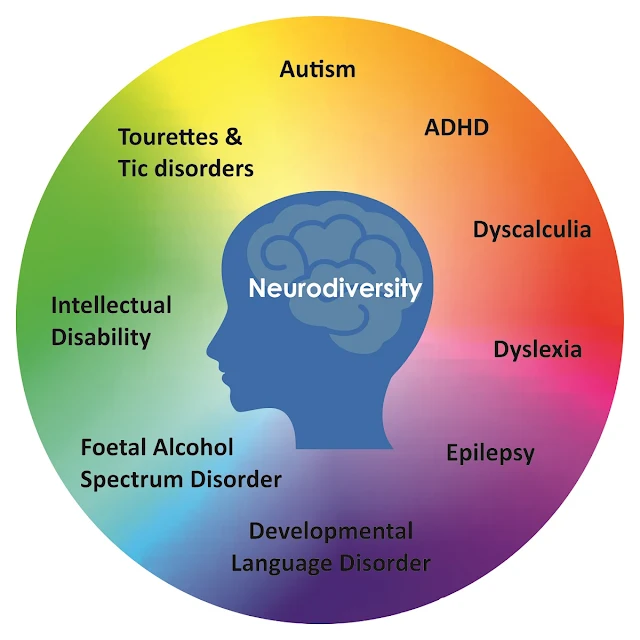Ad Code
Translate
Smart strategies for trading on crypto exchanges
October 20, 2025
Five Do’s For a Healthy Turnover That Bolsters Talent-Retention
October 20, 2025
Discover Honeybee Pharmacy (2025 Guide Important Consumer Tips)
October 14, 2025
What is Ozempic (semaglutide)? (Updated in 2025)
January 30, 2025
How To Find Suitable Properties In Cyprus?
October 20, 2025
Posture Bra: Improving Back Support and Comfort
October 20, 2025
10 Effective Strategies to Improve Domain Authority of Your Website
October 20, 2025
What is neurodiversity and how to include it in your workplace?
Zizo Gala-Mkhize
May 15, 2022
You've undoubtedly been hearing stuff about neurodiversity in corporate and education sectors lately if you've been paying attention to discussions concerning workplace diversity and inclusion. However, you might wonder what is meant by the term "neurodiversity" and how exactly your company can embrace it? Many corporations are adopting different strategies to incorporate neurodiversity in their workplace. Many employers are now acquiring the services of learning support providers such as Ofsted to ensure neurodiversity inclusion.
What is neurodiversity?
The word "neurodiversity" refers to the natural differences that can be found in the human brain. It has to do with how we think, process information, learn and behave. The majority of people are considered neurotypical, which indicates that their brains operate and process information following what is considered the norm in society. One person in seven is regarded to have neurodiversity, which refers to the fact that their brain functions in one or more ways different than what is considered normal. The term "neurodiverse conditions" frequently refers to their singular characteristics.
How to make a workplace neurodiverse
1. Obtain buy-in at all levels
Discuss the importance of a neurodiverse workforce with the company's top executives so that they can pass that information on to their employees. Having these discussions openly and transparently is critical. An environment that is welcoming to everyone, including those with neurological differences, is essential.
2. Create awareness
One of the most effective methods to show support for neurodiversity is to organize and conduct awareness training programs, management strategies, and total assessments for all employees. For instance, establishing a mentoring program gives neurodiverse employees a secure environment where they may discuss their emotions and seek guidance if they are having difficulty. It can be beneficial to participate in neurodiverse briefings and networks.
The employment of a professional adviser who would be present to neurodivergent employees and their line managers is another option that could be of use in some circumstances.
3. Modify your hiring practices
The concept of what constitutes an "excellent candidate" needs to be rethought by those in charge of hiring. It can be challenging for neurodiverse people to adhere to a number of superficial standards, such as giving a firm handshake or making direct eye contact with another person.
It is also necessary for managers to ask the appropriate questions in order to elicit the full range of an individual's skills and capabilities. For instance, EY removed the element of surprise from their interview process. If a candidate is not looking for a job that requires them to think quickly on their feet, there is no need to consider that during the interview.
In addition to this, it is essential to keep in mind that resumes do not provide the whole picture. Because so many people with neurodiversity have had trouble finding work that is a good fit for their skills, most of them are either self-taught or possess easily transferable skills.
Conclusion
Neurodiversity advocates work to change the perception of sensitivity from one that sees it as a flaw to one that sees it as a superpower.
Featured Post
DL Mining Launches Ethereum Contract Participation Service, Helping Users Earn $2K Stable Daily Returns
Zizo Gala-Mkhize-
October 20, 2025
Soapie Teasers
Sister Sites
Most Popular
List of 6,000+ Dofollow Commentluv Blogs FREE (Updated 2025)
January 16, 2025
Five Do’s For a Healthy Turnover That Bolsters Talent-Retention
October 20, 2025
Smart strategies for trading on crypto exchanges
October 20, 2025
Popular posts
List of 6,000+ Dofollow Commentluv Blogs FREE (Updated 2025)
January 16, 2025
How To Choose The Right Place For A Winter Campsite
March 06, 2023
Five Do’s For a Healthy Turnover That Bolsters Talent-Retention
October 20, 2025
Footer Menu Widget
Created By Blogspot Theme | Distributed By Gooyaabi Templates


Social Plugin